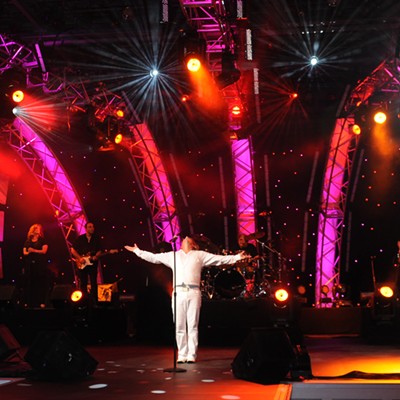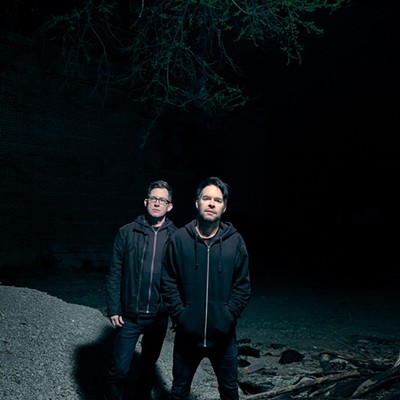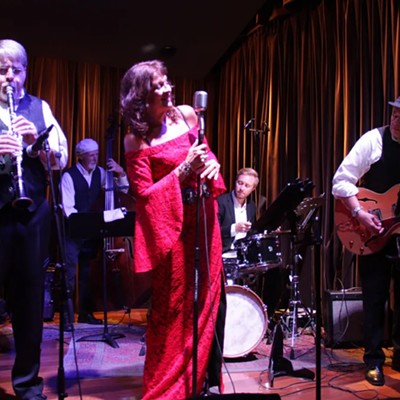Jesse Tabish's musical upbringing was pretty typical for a contemporary indie-rock musician: He took piano lessons as a kid, but fell away from it because practicing was a drag. Then he played in punk-rock bands as a teenager before rediscovering an affinity for Neil Young and The Beatles.
"I don't listen to much in the way of contemporary music," says the singer-songwriter during a recent telephone interview as his band, Other Lives, traveled through rural Montana. "I've always kept it pretty 20th-century."
Other Lives invokes traditional musical values such as a pop-song sensibility, earnest folk-rock engagements, orchestral drama and epic movie-soundtrack emotionalism.
The band has opened tours for The National, The Decemberists and S. Carey, with whom they played at Club Congress just last month. The band is now on tour with The Rosebuds, and will open for that North Carolina-based group on June 29 at Solar Culture.
Headquartered in Stillwater, Okla., Other Lives essentially began in 2004 as the instrumental indie-rock band Kunek, which included three players—Tabish, cellist Jenny Hsu and drummer Colby Owens—who are still working together in the current group. Kunek released one album in 2006 before morphing into Other Lives.
Other Lives released its self-titled debut in 2009. While it's a good recording, the homespun folk and string arrangements didn't meld together as seamlessly as they should have, and it only hinted at the greatness of its follow-up, the new Tamer Animals.
Tamer Animals is a remarkable achievement, one of the richest indie-rock albums of 2011 so far. A wide variety of musical settings provide the backdrops for Tabish's introspective, often melancholic compositions, which he says are the result of extensive collaboration with his bandmates.
From minimalist chamber pop (the Philip Glass-influenced "Dark Horse") to cinematic musical vistas (tinges of spaghetti-Western soundtrack music on "Dust Bowl III" and "Old Statues") to the Beatles-like harmonies on "Weather," the sounds and moods on Tamer Animals are varied and alluring. The title track uses dramatic piano and echoing bells to create an orchestral sweep. Perhaps the most captivating track is the leadoff single, "For 12," a warm, dark, strings-laden rumination that is what Gordon Lightfoot might've sounded like had he grown up in the 1990s.
The band recorded Tamer Animals with producer-engineer-drummer Joey Waronker in its rehearsal space/recording studio in Stillwater, where the sessions were very "hands-on," Tabish says.
"It's not really a proper studio, but it's where we feel at home," he says. "When you work in your space, it's unlike working in a studio, where there's someone on the other side of the glass, and you're disconnected from the actual sound that you are making while they are getting the sound for you."
Tabish says it was reassuring to hear the notes being played in the same room where they were created. That's not to say the band performed live at the same time.
"It was really the opposite of that. We built every song piece by piece. We never played these songs together as a band until we started rehearsing to play out live."
Most of the time, Tabish hears most of the arrangement for a song in his head and creates a demo tape to share with the band, he says.
"Then, before we start recording, the others will add some of their input. Some of those arrangements are there, and some of the original arrangements survive, but depending on how the song evolves, we may try a whole different approach by the time we make the final recording."
With its lush sound and ambitious scope, Tamer Animals is definitely challenging, but in an inviting way. It's not so erudite as to alienate listeners. Besides, these days, Tabish would never underestimate the musical sophistication of his audience.
"I really think today's music listeners are a really smart bunch people. There is a lot of music out there, and they are pretty savvy at sifting through and finding the good stuff. There's not much you can get past them. (One) of the positive things that technology has done for us is bring us a lot of bands, a lot of different artists in every kind of music, and it's made it easier to find the good ones. And I think the right listeners will find us."










